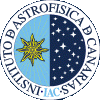How to go from an idea to a set of fully-functional Astronomical Observation Requests (AORs) for your PACS proposal
 Observation Planning Cookbook Observation Planning Cookbook
Observation Planning and Proposal Submission Tools is available in Herschel-SPOT (HSPOT).It has been adapted from the Spitzer
Planning and Observation Tool by arrangement between the NHSC, the Spitzer Science Center, and the HSC.
HSpot is the tool for planning Herschel observations and submitting proposals. The
HSpot software is available to download from the Key Project Announcement of Opportunity page
at the Herschel Science Centre (HSC) web site (http://herschel.esac.esa.int/).
The process of planning
a Herschel observation with HSpot consists of entering targets which are individually linked to
a desired Herschel observing mode via an Astronomical Observation Template (AOT). The instrument
parameters that completely specify the observation are entered via the AOT. The complete target
and instrument information results in an Astronomical Observation Request (AOR), which is the
primary unit of Herschel observing. HSpot allows you to prepare all your observations and to determine
how much time will be required to execute the observation by obtaining an estimate from
CUS server software at the HSC. This is the amount of time you must request for this AOR in your
observing proposal that HSpot allows you to prepare and submit.
Warning
The on-line Help in HSpot only presents a very much reduced version of this manual. To see the
full manual, either print out the PDF file on the webpage http://herschel.esac.esa.int/ or, if you are
opening Help from HSpot, open "Overview" and press the "Home" button at the bottom of the
page.
HSpot and this manual may look intimidating to the new user, but HSpot is actually a remarkably
simple and user-friendly piece of software. Most users will find that they can start to use it with little
or no instruction.
This User's Guide provides information about how the HSpot software works.
To make using HSpot and planning your Herschel observations easier,
we recommend that you:
- Pocket guides:Read the relevant sections of the Herschel Instrument and Observatory Manuals (available on
the HSC website at http://herschel.esac.esa.int/) to decide how best to implement your observations.
- Pocket guides:Read the Release Notes that are packaged with the software (or download them from the web
page). Some, but not all, of that information is repeated here.
- Pocket guides:Check the Announcement of Opportunity (AO) web page for additional information in helping
you plan your observations.
- Pocket guides:A list of HSpot bugs can be found on the Herschel AO page Herschel web page.
- Pocket guides:If possible, use one of the officially acceptance tested versions of HSpot.
- Pocket guides:Save your AORs often. HSpot does not save your work to disk automatically.
- Pocket guides:HSpot offers a wide range of visualisation options for your observations. Many problems and
complications can be avoided by using these.
Pocket guides:
Please contact us at the Herschel Help Desk (http://herschel.esac.esa.int) with any questions (for
technical reasons we will only have a Web interface to Helpdesk).
 Data Access and Processing: Data Access and Processing:
The Herschel data archive will be hosted at ESA's European Space Astronomy Centre (formerly Vilspa) in Villafranca del Castillo, Spain. Users of the ISO, XMM, and IUE archives will be familiar with this location. Unlike the ISO data processing piplines, however, which were based variously on fortran, IDL, and C, the Herschel Standard Product Generation software is being implemented in java, based on development in the interactive Data Processing (DP) environment of the exportable Herschel Common Software System (HCSS). Data processing in the HCSS is also rooted in the object-oriented java language, with Jython scripting cabilities in the user interface. The PACS interactive DP environment is part of the HCSS, and is being used during pre-launch instrument tests and then during operations by calibration scientists. The HCSS and its instrument DP environments will be available to users. Principal Investigator: Albrect Poglitsch, Max-Planck-Institut fur Extraterrestrische Physik
The PACS Observer's Manual will be the essential technical reference manual for PACS observers. It will provide technical information about the
design, performance and operational constraints of PACS. It will include technical information on planning, editing and submitting HERSCHEL/ PACS observations.
Credits
The contents of this page are based on the "Herschel-Spot (HSpot) User's
Guide"
Go back to PACS Instrument page
|

